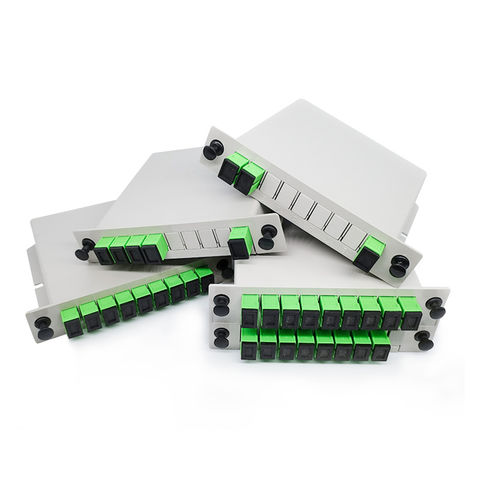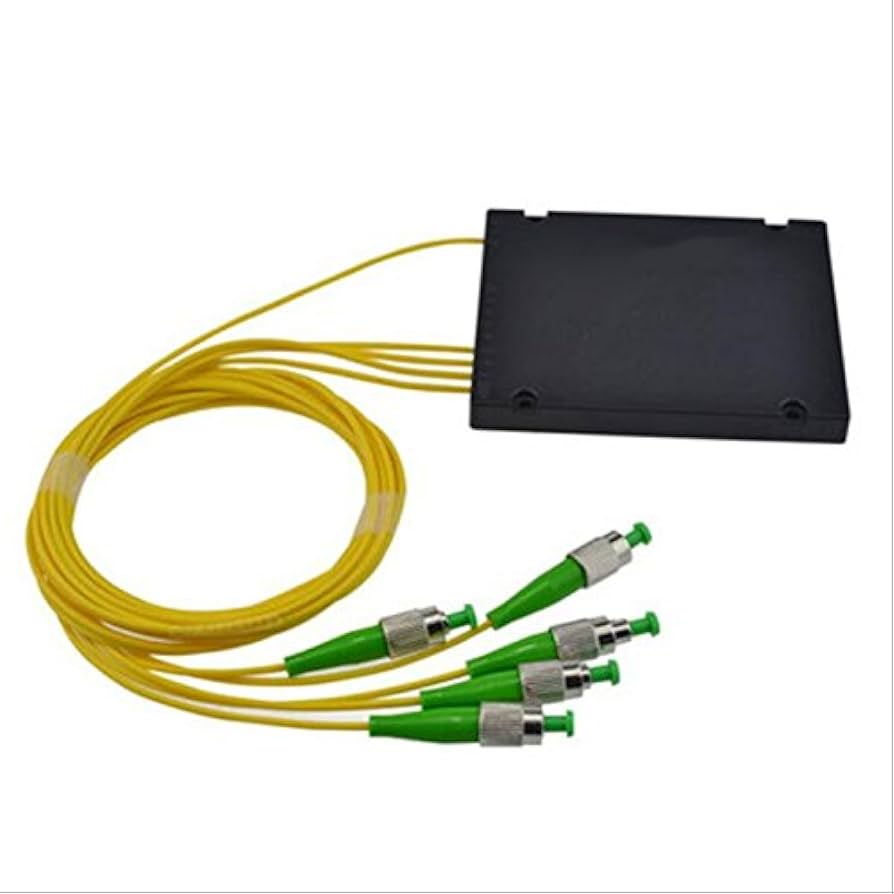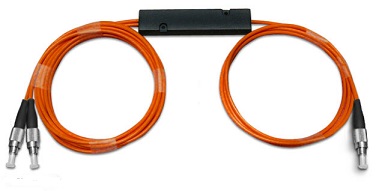What Are the Components of Fiber and 5G?

Modern communication technologies revolutionize how societies connect and interact. Fiber optics and 5G networks stand at the forefront of this transformation. Understanding these technologies is crucial for industry professionals and the general public. Fiber internet provides high-speed data transmission, while 5G networks promise faster mobile connections. Optical signals transmitted through fiber cables support the massive data demands of 5G networks. Components like distribution boxes, PLC splitters, ABS splitters, and cassettes play vital roles in these systems. The SC/LC/FC/ST type connectors ensure efficient connectivity. The future of communication relies on these advancements.
Components of Fiber Optic Technology
Core Elements of Fiber Optics
Optical Fibers
Optical fibers form the backbone of fiber optic technology. These fibers consist of a core, cladding, and coating. The core, made of thin glass strands, transmits light pulses. The cladding surrounds the core to protect it and ensure light remains within the core. The coating acts as an additional protective layer to prevent damage.
Light Transmission
Light transmission in optical fibers occurs through infrared light. This process involves sending light pulses through the core, which carries data over long distances. The efficiency of light transmission ensures minimal signal loss, making fiber optics highly reliable for data communication.
Fiber Optic Cables
Fiber optic cables encapsulate optical fibers and provide structural integrity. These cables include components such as Kevlar® for strength, ferrules for alignment, and connectors like SC/LC/FC/ST types for efficient connectivity. Fiber optic cables play a crucial role in supporting high-speed data transmission for applications like fiber internet and 5G networks.
Types of Fiber Optic Cables
Single-mode Fiber
Single-mode fiber is designed for long-distance communication. It has a small core that allows only one mode of light to propagate. This design reduces signal attenuation and increases bandwidth, making it ideal for high-speed data transmission over long distances.
Multi-mode Fiber
Multi-mode fiber is suitable for shorter distances. It has a larger core that supports multiple modes of light. This type of fiber is commonly used in local area networks (LANs) and data centers where high bandwidth over shorter distances is required.
Advantages of Fiber Optics
High Bandwidth
Fiber optics offer exceptionally high bandwidth, enabling the transmission of large amounts of data at high speeds. This capability is essential for modern applications such as fiber internet and 5G networks, which demand significant data throughput.
Low Signal Loss
Fiber optics exhibit low signal loss, ensuring data integrity over long distances. The use of light for data transmission minimizes interference and maintains signal quality, making fiber optics a reliable choice for high-speed communication.
Disadvantages of Fiber Optics
Cost
Fiber optic technology involves significant expenses. The production of optical fibers requires specialized materials and processes. The installation of fiber optic cables demands skilled labor and advanced equipment. These factors contribute to the high initial costs associated with fiber optics.
Installation Challenges
The deployment of fiber optic networks presents several challenges. The installation process often requires trenching and laying cables underground. This task can be time-consuming and labor-intensive. Urban areas may face additional difficulties due to existing infrastructure. Maintenance and repairs also necessitate specialized knowledge and tools.

Future Trends in Fiber Optics
Increased Data Rates
Future advancements in fiber optic technology will focus on increasing data rates. Researchers are exploring new materials and techniques to enhance light transmission. These innovations aim to support the growing demand for high-speed internet and data services. Enhanced data rates will benefit applications such as streaming, gaming, and virtual reality.
Enhanced Durability
Improvements in the durability of fiber optic cables will play a crucial role in future developments. Manufacturers are working on creating more robust coatings and protective layers. These enhancements will reduce the risk of damage and extend the lifespan of fiber optic networks. Enhanced durability will ensure reliable performance in various environmental conditions.
Components of 5G Technology
Core Elements of 5G
Radio Frequencies
Radio frequencies form the foundation of 5G networks. These frequencies range from low-band to high-band spectrums. Low-band frequencies cover large areas but offer lower speeds. High-band frequencies, also known as millimeter waves, provide faster speeds but have limited coverage. The combination of these frequencies ensures comprehensive and efficient 5G network performance.
Small Cells
Small cells enhance 5G network coverage and capacity. These low-power cellular radio access nodes cover small geographic areas. Small cells are crucial for urban environments where high user density exists. They improve network performance by offloading data traffic from macro cells. This results in better connectivity and reduced latency.
Massive MIMO
Massive Multiple Input Multiple Output (MIMO) technology increases 5G network capacity and efficiency. Massive MIMO uses multiple antennas at both the transmitter and receiver ends. This technology allows simultaneous transmission of multiple data signals. The result is higher data throughput and improved spectral efficiency. Massive MIMO is essential for meeting the high data demands of modern applications.
Network Architecture
Standalone (SA) 5G
Standalone (SA) 5G architecture operates independently of existing 4G networks. SA 5G uses a new 5G core network that supports advanced features. These features include network slicing and ultra-reliable low-latency communication (URLLC). SA 5G provides enhanced performance and flexibility for various use cases. This architecture is ideal for industries requiring dedicated network resources.
Non-Standalone (NSA) 5G
Non-Standalone (NSA) 5G architecture relies on existing 4G infrastructure. NSA 5G uses a dual connectivity approach, combining 4G and 5G networks. This allows for faster deployment and cost savings. NSA 5G provides improved speed and capacity compared to 4G alone. However, it lacks some advanced features available in SA 5G.
Advantages of 5G
High Speed
5G networks offer significantly higher speeds compared to previous generations. Users can experience download speeds up to 10 Gbps. This enables seamless streaming, gaming, and other data-intensive activities. High-speed connectivity enhances user experience and supports emerging technologies.
Low Latency
Low latency is a critical advantage of 5G networks. Latency refers to the time it takes for data to travel from the source to the destination. 5G networks can achieve latencies as low as 1 millisecond. This is essential for applications requiring real-time communication. Examples include autonomous vehicles, remote surgery, and augmented reality.
Disadvantages of 5G
Infrastructure Costs
5G networks require a significant investment in infrastructure. The deployment of small cells and massive MIMO antennas involves substantial expenses. Companies must install numerous small cells to ensure adequate coverage. These installations often necessitate new distribution boxes and fiber optic cables. The cost of these components, including SC/LC/FC/ST type connectors, adds up quickly. Additionally, the need for skilled labor to handle the installation of these technologies further increases costs.
Limited Coverage
5G networks face challenges in providing widespread coverage. High-band frequencies, essential for high-speed data transmission, have limited range. This limitation requires a dense network of small cells to maintain connectivity. Rural areas often lack the necessary infrastructure to support such dense networks. The reliance on fiber optic cables for backhaul also poses challenges in remote locations. These factors contribute to the limited coverage of 5G networks.

Future Trends in 5G
Integration with IoT
The integration of 5G with the Internet of Things (IoT) will revolutionize various industries. 5G networks offer the low latency and high speed required for IoT applications. Smart cities will benefit from enhanced connectivity and real-time data processing. Industries such as healthcare and manufacturing will see improvements in efficiency and automation. The combination of 5G and IoT will drive innovation and create new opportunities.
Enhanced Mobile Broadband
Enhanced Mobile Broadband (eMBB) represents a significant trend in 5G technology. eMBB aims to provide faster and more reliable mobile internet. Users will experience seamless streaming and gaming with minimal latency. Fiber internet will play a crucial role in supporting eMBB by providing high-speed backhaul. The use of advanced technologies like massive MIMO will further enhance mobile broadband capabilities. This trend will shape the future of mobile connectivity.
Fiber optics and 5G technology play a crucial role in modern communication. Fiber optics provide high-speed data transmission with minimal signal loss, while 5G networks offer unprecedented speed and low latency. Continued innovation and investment in these technologies are essential to meet growing data demands. Staying informed about future developments in fiber and 5G will help industry professionals and the general public understand their impact. The integration of 5G with IoT and advancements in fiber optics will drive the next wave of technological progress.
See Also
Understanding the Differences Between FBT and PLC Splitters
How to Choose Reliable Fiber Splice Closures
MPO Cable Assemblies for Modern Data Centers
What Are Distribution Boxes and Their Functions in Fiber Optics
Selecting the Right IP68 Waterproof Connectors for Telecom Use
About US
Follow Us
AnetFiber company's main products are indoor and outdoor optical fiber cables, outdoor waterproof pre-connected fiber-to-the-home products, PLC optical fiber splitters, optical fiber jumpers and pigtails, MTP®/MPO high-density big data product solutions, optical fiber field quick connectors and research and development molding, injection molding and production of optical fiber distribution boxes, optical fiber chassis cabinets, the market has expanded to the world, Europe, America, Asia, the Middle East and Latin America.
Address
Shenzhen City, Baoan District, Yanluo Street, Tangxiayong Community, Yangyong Industrial Road, Tonggangda New Energy Vehicle Park 406
Contacts
+86 199 2655 3586

